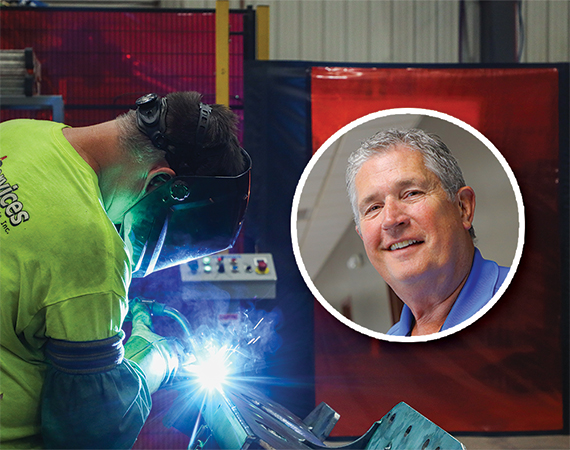Growing up on an 80-head dairy farm in southern Minnesota, Kurt Schrom focused on continuous improvement long before he knew there was a name for it. He constantly worked to complete his chores as efficiently as possible so that he and his siblings had more time for fun.
Schrom’s efforts to maintain lean farm operations evolved into a four-decade career that took him from a small welding shop to running factories for Blount and Caterpillar. Today, Schrom serves as CEO of Metal Services of Blooming Prairie, returning home to lead the company where he once was the first employee hired. He still focuses on continuous improvement, bringing to bear his deep experience and insight gleaned from working at large and complex companies.
Along with company founder and owner Dennis Heimerman, Schrom is implementing strategic plans for growth, automation, and continuous improvement at Metal Services. The manufacturer runs a smaller operation than the plants where Schrom previously worked, yet he sees advantages in being able to execute nimbly and more quickly capture positive results.
At Metal Services, “I wanted to implement some of the things I’ve learned and done over the years and so far, it’s been a good niche,” Schrom says. Plus, having the opportunity to be at the helm is a good fit for him. “I love the responsibility and I love winning. I like being a leader and leading people, but I do it where we’re all in the trenches together.”
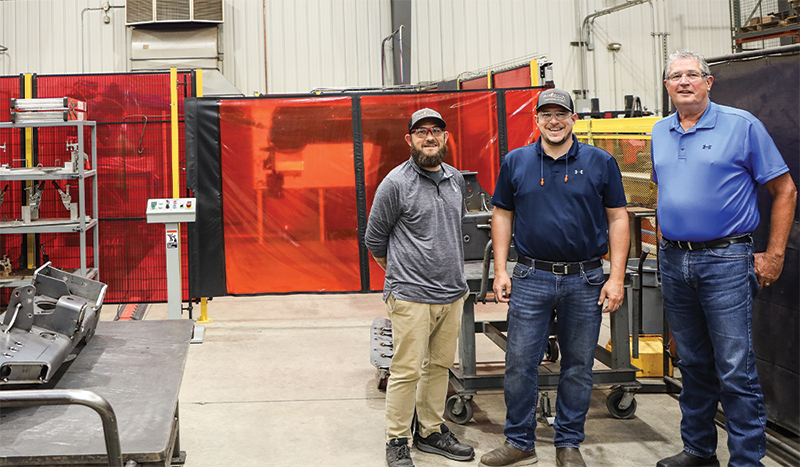
Schrom puts himself in the trenches in other ways, too. He serves on an Enterprise Minnesota Peer Council to share advice and learn from other manufacturing leaders in southern Minnesota. And he recently joined the board of directors for Enterprise Minnesota.
“Kurt has an interesting blend of being a driver and really understanding and communicating with people,” Kill says. “He has brought a very strategic conversation to Metal Services, and he has that small community upbringing and large company experience mixed together.”
Kill predicts that Schrom will be an excellent board member based on his strong communication skills and willingness to learn. “He really fits the culture of what we want on the board — someone thoughtful who asks good questions. His career experiences make Kurt a really good listener and a good communicator. I always say good board members do two things: They ask good questions and hold organizations accountable to the measures they set out. Kurt is already doing that.”
The same is true at Metal Services, where Schrom became COO in 2020 and CEO in 2023. Not one to rush into massive change without detailed knowledge and a plan, Schrom first spent eight months evaluating operations and analyzing the numbers from the company’s three business lines. Then it was time to set goals and strive to attain them.
Heimerman knew that Schrom would bring insight and rigor to Metal Services, and he’s been delighted to see the significant difference Schrom has made so far. “We keep stepping up our game. Every time I walk through the shop, I see the parts, and these are the nicest parts we’ve ever done when it comes to quality and on-time delivery,” Heimerman says. “We were heading in that direction, but with Kurt there it’s been happening faster. It’s pretty amazing to see the wealth of knowledge and experience he’s bringing to Metal Services.”
You can go home again
Heimerman and Schrom go way back. After Heimerman scraped together the equipment and necessary capital to open his shop in 1984, the first person he hired was Schrom. Metal Services initially focused on doing repair work for the area’s large population of farmers. The company also produced some parts, giving Schrom an opportunity to put his welding skills to work.
But when Schrom got married, the need for health insurance prompted him to move on to Blount Forestry in 1985. He joined the night shift on the line, taking on as much welding work as he could. The Owatonna site manufactured timber harvest equipment, including large four-wheel-drive attachments and heads for cutting down trees. Schrom liked the work and his co-workers. “It was a good time dealing with big diesel engines, and there were a lot of us young farm kids there,” Schrom says. “There was a lot of energy and hard work. People didn’t need to get motivated because they grew up being motivated.”
Schrom shifted to days in hopes of gaining management experience. Eventually he returned to the night shift in a leadership capacity, working his way up to be the night-shift supervisor. In addition to developing leadership skills, Schrom also had his eyes opened to the possibilities of lean operations in manufacturing. His boss at the time was already practicing lean in the mid-’80s, and Schrom caught the single-piece flow bug. He saw the benefits of vertical integration and building to order.
“I liked the activity around build-to-order. We would build this model one day and another model the next day, and you could see the order board filling up. It was strategic — we focused on having the right inventory, the forecasting, and worked hard with vendors so they’d want to be our partner,” Schrom says. “It was fun to learn.”
He saw, too, the impact of continuous improvement work. When Schrom started at Blount in 1985, the team completed four units a week on a good week. By the early 1990s, Blount was building more than 10 a week with not many additional people. “There was a lot of focus on, ‘How do we do more and how do we simplify?’” he says.
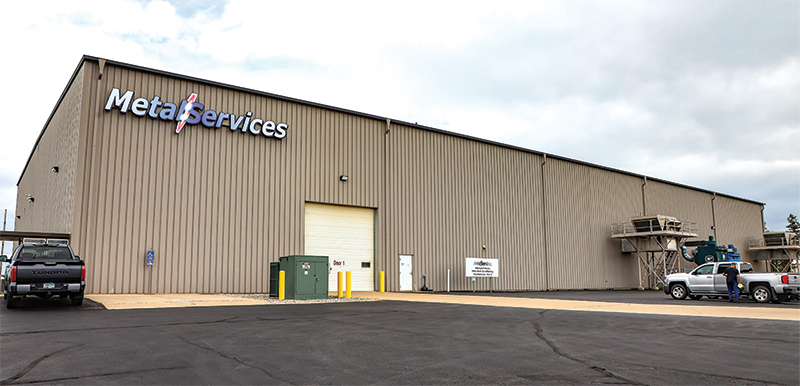
Champion of lean
In 1996, Schrom moved to Blount’s Wisconsin cylinder plant to take on the production manager position, where lean was in full swing. From single-piece flow to small-batch manufacturing, the plant operated efficiently using lean principles. But it had some struggles with warranties, and Schrom was tasked with fixing the root of the problem during his 18 months there.
Mission accomplished, Schrom returned to Owatonna and became even more immersed in lean and leadership. From 1999-2007, he served as general operations manager of Blount’s forestry division. He led the organization through lean transformations and engaged suppliers in Kaizen events, which united operations, supply chain, purchasing, engineering, and finance. Schrom’s overall strategic direction, leadership, and lean initiatives resulted in improvements in quality, safety, cost, and just-in-time delivery.
Then Caterpillar bought the division. After working through the integration, Schrom was named facility manager at its LaGrange, Ga., plant. Impressed by his lean work at Blount, the Caterpillar team wanted him to onboard some of those principles in Georgia. It wasn’t as much of a slam dunk because the plant was structured differently, Schrom says. But he and his team were able to make strides in quality, efficiency, and productivity by focusing on lean.
Schrom bolstered his continuous improvement credentials in 2014 when he became the Master Black Belt for Caterpillar’s forest products division. He led Kaizen events and Six Sigma organizational change, and did one-to-one mentoring with employees, consultants, suppliers, and Caterpillar dealer teams.
That’s not to say that the lean efforts always went seamlessly. Schrom navigated around naysayers, thorny problems, and difficult goals by focusing on people. “My saying always was, ‘There isn’t a person in this factory who wants to come to work to fail or make a mistake,’” he recalls. “We have to have the right processes in place to drive that.’”
Schrom would lead teams to dissect the problem, tapping into employees’ expertise to help them develop solutions. Then the team would put the ideas to the test. Schrom learned over time that patience is key, as well as being realistic about what can be achieved during one continuous improvement effort. He compared it to football: “We might not have scored a touchdown in that Kaizen event, but we went from the 50-yard line down to the 20. Then we did another Kaizen event to get the touchdown.”
Schrom’s time at Caterpillar ended in 2019 when the company sold his division. He called Heimerman to see if he knew of any openings. Heimerman had started thinking about bringing in an outside leader and was impressed with Schrom’s experience on larger stages. He knew Schrom could make a significant difference at Metal Services.
Schrom rejoined the company in March 2020, just as the pandemic shut the world down. But Metal Services was deemed essential, so the plant stayed open. Schrom spent the first eight months with his Master Black Belt on, focused on the data to evaluate how the company was performing.
Metal Services has three divisions: a metal fabrication production shop with capabilities in laser cutting, pipe bending, and component manufacturing; a repair unit; and a millwright team that primarily serves agriculture processing plants. Under Schrom, each division became its own profit center, with separate strategic reviews and objectives for performance, sales, quality, and safety.
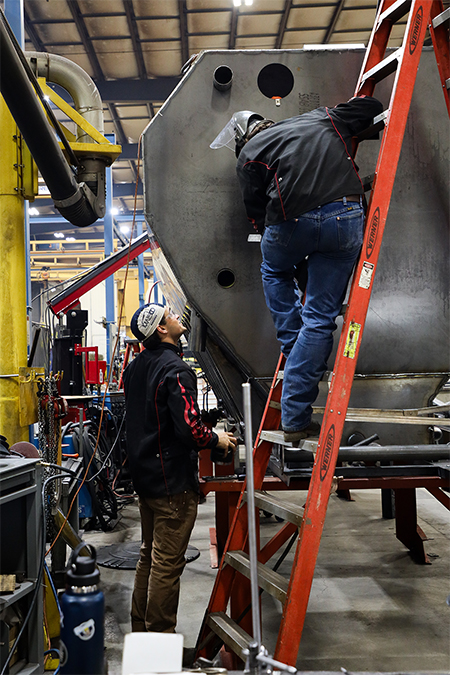
Prompting growth became another part of his agenda. Schrom focused the team on a three-year plan that involved adding services like assembly, onboarding new technology, expanding marketing, and deepening relationships with existing customers. Metal Services automated its quoting software and brought on a welding robot.
The company’s fresh digital marketing efforts and outreach to new customers quickly expanded sales in its 250-mile region. Now Metal Services is broadening this work to encompass North America. Combined, these efforts are helping the company meet its goals to grow from $8 million to $15 million in revenue in three years, Schrom says.
Action plans show results
Kurt Bear, a business development consultant at Enterprise Minnesota, has watched Metal Services thrive with Schrom in the driver’s seat. “He’s filling a really vital role,” Bear says. “They’ve been doing well, and they are very, very focused on lean and being organized.”
Bear notes that Schrom “does a particularly nice job of using metrics in the business to drive continuous improvement,” pointing to an effort to analyze and improve the capacity of existing equipment before purchasing more.
Abbey Hellickson, a business growth consultant for Enterprise Minnesota, has been working with Metal Services on leadership development since early 2023. She points to Schrom as a key factor in the company’s recent success.
“Kurt came into Metal Services with a strategic vision for growth for the organization, and he’s doing it in a way that’s sustainable,” Hellickson says. “He has a plan, creates a strategy, and thinks of the holistic components of the organization. It’s a process, it’s people, and there’s a technology element he’s bringing in. He’s deliberately moving forward — it’s not chaotic or rushed. From my perspective, that’s the difference Kurt brings.”
The leadership development work with Enterprise Minnesota has helped employees buy into Schrom’s vision for Metal Services’ future, Hellickson says. It’s also building a pipeline of people who can step into bigger leadership roles going forward.
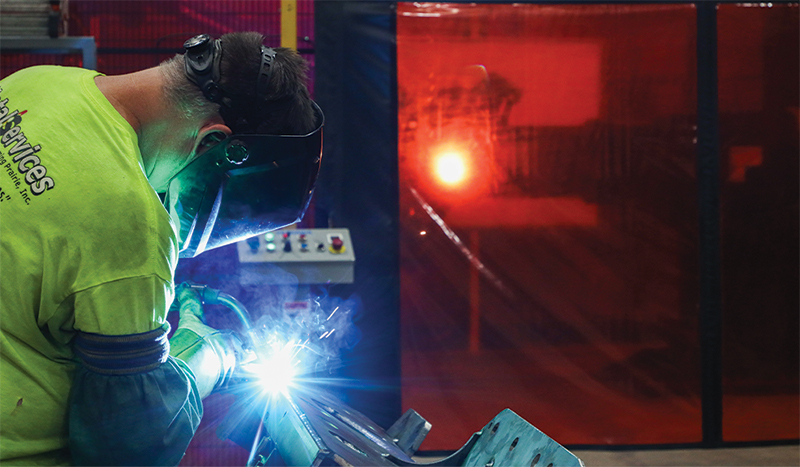
Key components include the development Hellickson conducts with the team, and follow-ups that Schrom provides to supplement that learning, she says. Each person has an action plan that is posted in the conference room. The team meets weekly about progress toward their goals and action plans, along with a monthly meeting with Hellickson. “That has helped push and elevate this group at the right pace,” she says. “Kurt has done a good job fostering their development and thought processes and elevating Metal Services while he’s doing that.”
After seeing Schrom on the job, Hellickson observes that “he wants the best for both the business and the people. He will see talent and truly push people in a positive way to completely maximize their talent.”
Metal Services’ customer Brant Pfantz, director of supply chain at an Iowa manufacturer, identifies transparency and honesty as key strengths of Metal Services. In 2022 when supply chains were out of whack, the company was looking for vendors with manufacturing capacity. A cold call from Metal Services led to a site visit, where a Schrom-led group discussed forging a potential business relationship. It’s been off to the races ever since, with Metal Services doing fabrication of key components for the manufacturer.
Pfantz has dealt with all manner and styles of companies over the years. He has been impressed with Schrom and Metal Services for their integrity. “They are straightforward, and I don’t feel like they are playing games with us,” he says. “It’s nice to interact with Kurt because he’s so logical. He’s just solid. If they are going to be late on something, he notifies us, and if there are quality issues he jumps on it and gets a plan in place to fix it.”
The two companies have developed a partnership with a long-term view. Metal Services has performed well and did what it took to become a strategic vendor to the Iowa manufacturer. “It’s been refreshing. I keep going back to trustworthiness but it’s true,” Pfantz says. “I feel like it’s a real partnership where they want us to succeed and we want them to succeed, and we’re both pulling in the same direction.”
This relationship reflects the guideposts of Schrom’s career, to problem-solve while staying focused on quality and the customer. “When I mentor and coach young leaders, my first question is always, ‘Would you give that to the customer?’ That’s something we asked ourselves a lot and still do today,” Schrom says. “For me, it goes back to these basics: We’re on time, we’re competitive, quality matters, and we take care of customers and their business.”
Return to the Fall 2024 issue of Enterprise Minnesota® magazine.
